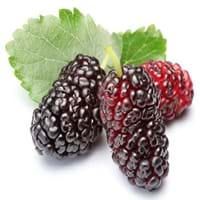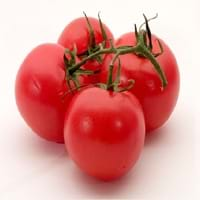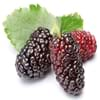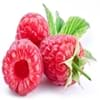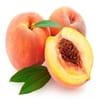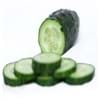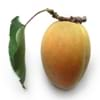Health Benefits
Anti-aging benefits, Boosts immune system, Cancer prevention, Flu treatment, Hair care, Heart care, Improves eye vision, Increases metabolic rate, Kidney stone treatment, Maintains healthy cholesterol level, Skin cleansing, Skin rejuvenation, Treatment of common cold, Treatment of skin Diseases
Anti depressant, Cancer prevention, Heart care, Muscle pain relief, Prevents constipation, Regulation of heart rate, Weight loss properties
General Benefits
Boosts immune system, Controls blood sugar levels, Flu treatment, Improves eye vision, Maintains healthy cholesterol level, Treatment of common cold
Controls blood pressure, Eye care, Maintains healthy cholesterol level, Strengthens bones
Skin Benefits
Anti-aging benefits, Skin cleansing, Treatment of skin diseases
Anti-aging benefits, Heals sunburn, Skin rejuvenation, Treatment of acne, Treatment of skin diseases
Hair Benefits
Protects hair, Regulates hair growth
Good conditioner, Prevents hair loss, Softening mask
Allergy Symptoms
Breathing difficulty, Itching, Nasal congestion, Redness of eyes, Runny nose, Sneezing
Anaphylaxis, Coughing, Diarrhea, Eczema, Hives, Itching sensation in throat, Nausea, Skin Rashes, Runny nose, Sneezing, Swelling of mouth, tongue or lips, Vomiting, Wheezing
Side Effects
Decrease in blood sugar levels, Allergic reaction
Heart burn
Best Time to Eat
Best if taken as a breakfast (or empty stomach), As a snack in the late afternoon, Don't consume at night and before bed, Eat the fresh ones, avoid mixing with any other foods, don't eat after meal., Morning time (before lunch)
Along with meal, Don't consume at night and before bed, Morning time (before lunch)
Vitamin B5 (Pantothenic Acid)
Not Available
Vitamin C (Ascorbic Acid)
Vitamin K (Phyllochinone)
Phytosterol
Not Available
Calories in Fresh Fruit with Peel
Calories in Fresh Fruit without Peel
Not Available
Not Available
Calories in Canned Form
Not Available
Type
Berry
Berry, Fruit vegetable
Season
Spring, Summer
All seasons
Varieties
Charparral, Pendula, Teas, Bellaire and Lingan
Better Boy, Early Girl, Beefsteak, Beefmaster, Pink Brandywinem, Caspian Pink, Thai Pinks, Hawaiian Pineapple, Kellogg’s Breakfast, Cherokee Purple, Black Ethiopian and Paul Robeson
Color
Pink, Purple, White
Green, Orange, Pink, Purplish black, Red, White, Yellow
Origin
China
Central America, South America
Soil Type
Clay, Loam
Loam, Sandy loam
Climatic Conditions
Sunny
Sunny, Warm
Facts about
- It can take up to 10 years for a tree to produce mulberry fruit.
- Mulberry leaves are fed to silkworms to enhance silk production.
- In Germany, they say that devil uses root of mulberry tree to polish his boots.
- Around 10,000 varieties of tomatoes are grown in the world.
- In Buñol, people celebrate the Tomatina festival where around 1.5 lakh tomatoes are used.
- As per Guinness book of records, heaviest tomato weighed 3.51 kg.
Other Countries
Colombia, Egypt, India, Indonesia, Kenya, Mexico, Pakistan, Peru, Russia, United States of America
Brazil, Egypt, India, Iran, Italy, Mexico, Spain, Turkey, United States of America
Top Importer
Not Available
Nigeria
Top Exporter
China
Netherlands
Botanical Name
Morus Alba
Solanum lycopersicum
Synonym
Morus atropurpurea or Morus multicaulis
Lycopersicon esculentum
Subkingdom
Tracheobionta
Tracheobionta
Division
Magnoliophyta
Magnoliophyta
Class
Magnoliopsida
Magnoliopsida
Subclass
Alismidae
Asteridae
Family
Moraceae
Solanaceae
Species
M. alba
S. lycopersicum
Generic Group
Mulberry
Nightshade
Difference Between Mulberry and Tomato
We might think that Mulberry and Tomato are similar with respect to nutritional value and health benefits. But the nutrient content of both fruits is different. Mulberry and Tomato Facts such as their taste, shape, color, and size are also distinct. The difference between Mulberry and Tomato is explained here.
The amount of calories in 100 gm of fresh Mulberry and Tomato with peel is 43.00 kcal and 18.00 kcal and the amount of calories without peel is Not Available and Not Available respectively. Thus, Mulberry and Tomato belong to Low Calorie Fruits and Low Calorie Fruits category.These fruits might or might not differ with respect to their scientific classification. The order of Mulberry and Tomato is Rosales and Solanales respectively. Mulberry belongs to Moraceae family and Tomato belongs to Solanaceae family. Mulberry belongs to Morus genus of M. alba species and Tomato belongs to Solanum genus of S. lycopersicum species. Beings plants, both fruits belong to Plantae Kingdom.
